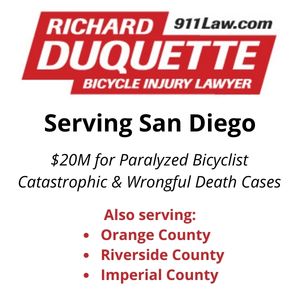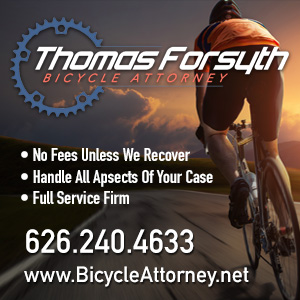Let’s be careful out there.
The closer we get to the holidays, the more drivers are focused on finding that elusive parking space and their frenzied search for those last minute gifts. And many may have started their Christmas drinking long before they’d consider tippling any other time of the year, and may be in no condition to drive — yet think they can do it anyway.
And the last thing most drivers are likely to be looking for on the road is a bike. Let alone anyone on one.
We’ve already had one rider killed in Orange County this week, and word came of another bad bike wreck at 7th and Spring in Downtown L.A. on Thursday.
And that’s two too many in just the last two days.
So if you’re riding today or over the weekend, use extra caution. Especially Christmas Eve, as people make their way home after imbibing in a little too much holiday cheer at lunch or office parties.
No, you shouldn’t have to assume responsibility for others on the road; and yes, it’s their obligation to operate their vehicles safely and soberly.
But this time of year, a lot of them don’t. And won’t.
And drives like that usually aren’t the ones who end up paying the price for their mistakes.
So ride defensively. Assume you’re invisible, and that everyone you encounter on the road is driving distracted. Or worse.
And light yourself up like a Christmas tree on your way home tonight.
And not just in honor of the holiday.
.………
Opponents to NYC’s Prospect Park West break out the Unfrozen Caveman Lawyer argument, claiming they just can’t understand those darn statistics. And Traffic meister Tom Vanderbilt joins in the debate as well, pointing out that a study of 24 California cities showed that the cities with higher bike usage also had a better safety rate — and not just for bikes.
.………
Looks like Glendale’s Safe & Healthy Streets program has had a successful year, too. Playing Santa by bike in the South Bay. A cyclist is rescued after she was swept into flood waters in Palm Springs. The DMV points out that a helmet is required for all riders of motorized bikes; I had no idea. Look out for cars parked in bike lanes, which, despite all logic, remains legal in California unless banned by local ordinance.
Bikes are becoming so fashionable, one day, they may even be used for transportation. A typographic look at the anatomy of a bicycle. A Harford cyclist is threatened with bike confiscation after parking it in front of the hotel where he’s attending a conference. Fayetteville NC’s Bicycle Man fixes up and gives away 1,100 bikes to children in poor communities; yes, 1,100 bikes from a single, huge-hearted man.
Unbelievably, a Brit driver who ran down and killed a cyclist participating in a time trial walks, subject only to a one-year driving ban, community service and £110 in court costs; evidently, a cyclist’s life is cheap in Great Britain these days. Winnie the Pooh and Christopher Robin try to make sense of the UK’s blustery bike program days. The many joys of winter cycling. Dutch in Dublin looks at biking Irish fashion stylist Aisling Farinella. Pro cyclist Robbie McEwen is credited with saving his fellow yacht passengers from carbon monoxide poisoning. An 18-year old Aussie cyclist receives a five month driving ban for drunk driving.
Finally, Velonews looks at the good doctor, a very forgiving lawyer and whether Vail is responsible for their jerk of a DA.
.………
My best wishes to you and yours for a very safe, healthy and happy holiday season.
Merry Christmas!














